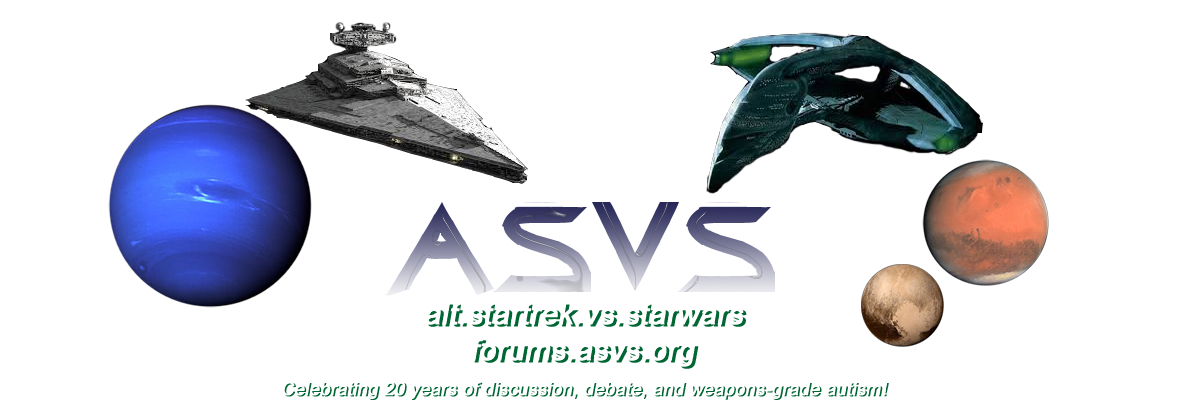-
Content Count
1,380 -
Joined
-
Last visited
-
Days Won
10
Brian Young last won the day on December 31 2017
Brian Young had the most liked content!
Community Reputation
11,994 ExcellentAbout Brian Young
-
Rank
Illustrious Potentate
Contact Methods
-
Website URL
http://www.scifights.net
Profile Information
-
Gender
Not Telling
Recent Profile Visitors
The recent visitors block is disabled and is not being shown to other users.
-
You see, when dealing with a beam weapon, ANY collateral damage is completely dependent on vaporization at the point of impact. A bomb is not similarly limited, as the energy naturally spreads in all directions. But the beam energy strikes exactly one point, usually the smaller the better. If material is vaporized (energy), the gasses will affect the area immediately surrounding the impact. If there is enough energy, perhaps some of that material will also be melted or vaporized. If it is vaporized violently enough (power), these gasses will be under pressure, which will cause a shock wave (blast effect) in atmosphere. As this is a secondary effect, the blast result is invariably much less than a bomb of similar yield, where blast effects are primary. Lets imagine a teraton laser pulse hits advanced armor, and all that energy simply spreads across the hull and cools in a fraction of a second. As no material is vaporized, there would be no shock wave. Period. From a teraton. Lets say this stuff has an incredibly high heat capacity, and it takes several teratons, all delivered in a fraction of a second (to avoid the quick spread) to vaporize at all. You hit it with a 20 teraton laser pulse, which vaporizes a few cubic meters, but violently enough to blow a 60 meter hole, due to the quick input causing a shock wave. Again, the lateral effects are utterly dependent on how easily the material vaporizes. Now, in that mindset, how can this compare to firing the same weapon on tungsten? Dirt? An unarmored target? Obviously, the softer targets would vaporize more easily, resulting in greater collateral damage.
-
"...if the ground were made of tungsten." We are talking about turbolasers in space (or in the very thin upper edge of atmosphere) striking advanced armor. Ground and tungsten are both false assumptions, explaining the inconsistency.
-
The problem with scaling the damage vs an armored ship is the fact it is armored. We can scale the damage vs soft targets due to the input duration and direct observation, because we can assume similar vaporized material with similar energy input within an order of magnitude, just different pressure due to time. However, advanced armor does not vaporize so easily, and therefore we're still looking at orders of magnitude less collateral damage, or indeed damage of any kind, than vs soft targets. To state that we should be seeing huge fireballs miles across when a turbolaser pulse hits the armor is to assume that massive amounts of the armor would be vaporized, just as easily as dirt. This assumption is false by orders of magnitude. The same weapon that might blow a 15 mile city apart might only blow a 60 meter hole in heavy advanced armor, as seen onscreen. The armor would absorb most of the energy, and it apparently takes heavy guns to damage it at all. A few cubic meters would probably be vaporized, causing the 60 meter hole, and this would cool quickly as it dispersed due to expansion cooling. Put simply, armor works. Good to see you back in the saddle, S.
-
In fact, over in my part of the forum, I calculated the difference in duration of energy release vs collateral damage of blasters/turbolasers of a similar yield to explosives scales almost exactly. The difference in collateral damage was about 14,000 times, and the difference in duration was 19,000 times. That's uncanny consistency, and if anything, proves the yield estimates of turbolasers.
-
I still fail to see a problem. All the energy is deposited into the point of impact. That material is vaporized, and anything else that happens is a secondary effect as a result of that. Gases cool quickly, as demonstrated when approximately 500 megajoules was delivered to the grate, but didn't injure anyone in an enclosed space. The expansion causes cooling. As far as blast effects, the rate of injection is key. Bombs and impacts deliver their energies much more rapidly than turbolasers, resulting in much greater lateral blast effects. The difference is orders of magnitude.
-
Ted C started following Brian Young
-
Brian Young started following Ted C
-
https://dl.dropbox.com/u/20522425/rots2.mov Go frame by frame in the beginning of this video (with Quicktime just use the arrow keys), and you will see shield effects on the front of Invisible Hand, the approaching Venator (just under the trench), and a distant Munificent. Anyway, I'm retreating back to my own part of the forum. I work full time, I'm a father, I'm a husband, I'm running a time-consuming website, I'm secretary of the Masonic Lodge, and I need some exercise. It is easier to maintain a presence if I don't have to track down this thread.
-
Shield barrier: Of course, pulses do "pop" closer or farther away, which supports the volumetric idea. But the point is that, in this image, the shield is defeated, and part of the pulse penetrates, even if deflected to a different angle. This supports the idea that if a pulse is powerful enough, it will penetrate without visible effects. The shields were at their weakest, but the splintering takes place far enough away that a fighter could fit underneath.
-
I dodge no issue. I believe I posted that long clip from the Clone Wars, where Grievous' huge Munificent guns demonstrated definite shield effects against Venators. Also, there are lots of shield effects in the opening scene of ANH which I've covered in at least 2 case studies. There are shield effects in TPM during the ground battle, and with the droidekas. In fact, I created an entire case study on shield effects: http://www.scifights.net/starwarsshields.mov It was the precursor to the video we are discussing now!And there are shield effects in ROTS. A TradeFed toilet seat shows blue shield effects. I believe some of the ships in the distance just after Obi-Wan and Anakin dip under their destroyer to enter the battle demonstrate shield effects. They certainly fire on each other without causing huge gaping holes. And the battle had lasted for a while. Recall in the animated Clone Wars final episode, Obi-Wan and Anakin were in a distant star system at the time, and had to jump to Coruscant, while the battle was raging. This is corroborated by the fact they were not in the battle yet when the film begins.
-
Some fatherly advice, Khas. Don't worry about it. I was certainly no Casanova, but the best policy is to wait until you are married. Hopefully she will too. I've been married for 11 years, and believe me, there are reasons old fogies suggest that. Premarital relations lead to jealousy, and is always awkward when you run into them later. The awkwardness comes when you get home and have to answer questions. Shyness is the biggest turn off for women. They like men who are confident. That is hard to simulate, but I recommend seeking out a geeky girl rather than the hottest girl. Go to Trek conventions, go meet girls in the "smart" sororities. You wouldn't be satisfied with a socialite. Personally, when the drinking starts, I shut down. I can't stand those parties and shenanigans. Now I love to dance, but that's different. There are plenty of women who would be happy going to see Star Trek after some pizza and Pepsi. I married a Trekkie. But I converted her to a Fiver.
-
Also note that a hypothesis doesn't have to be perfect. When dealing with low accuracy inconsistent data, will one ever be perfect? No. It doesn't have to be perfect, it just has to be the best idea we have, based on the data we have. The semipermeable idea has *Explicit explanations given onscreen, which are so plain and straightforward as to be foolproof. *At least one BTS explanation that is too, from VHX supervisor Dennis Muren. *Many examples of starfighters damaging shielded capital ships. *Many examples of ships docking while shields are up. *Several examples of people or vehicles walking through shields, or shields passing over them. etc. Counter arguments have involved *Friendly turbolaser fire weakens the shields. But this is shot down by examples that don't involve friendly turbolaser fire (pun intended). *Shields are spread out to counter multiple threats. But sometimes there are no multiple threats. *Quotes from a book involving semantics arguments. This was addressed by the fact the Imperial fleet so overwhelmed the Rebels, that we have to consider the situation. And an argument based entirely on semantics is a bad one, particularly when it doesn't jive with the films, nor other quotes that exist in those films or TV shows. So the semipermeable idea is still the most reliable one presented. The caveats are primarily the apparent variable geometry of some shield types, and the multiple shield types. But no other single idea covers more than a few examples, involves fewer assumptions, or superior logic. Most of them are easily flatly contradicted by video evidence.
-
Now for those worthy of attention: Oh come on! You're just making stuff up now. I'm planning an entire video on the Scientific Method, which deals with this. We're working with low accuracy, inconsistent data. If consistent rules are applied to the data to account for the inconsistencies, and everyone uses good logic, we should theoretically all come to the same conclusion. Of course, that doesn't always happen, we all think differently. But if those rules are followed, and good logic is used, the hypothesis produced should be a good one. In that mindset, the way to defeat that hypothesis is to present a superior one, which either addresses the data more consistently, more concisely with fewer assumptions, or employs superior logic, or a combination thereof. To complain and make up excuses about the individual examples is, to look at the big picture, simply a statement that, "dadgum, the data is inconsistent with low accuracy!" But that is a basic fact of what we are doing - we all know that going in. It's like saying "let's sit down and plan a vacation, and since we don't know exact prices, we'll generalize and round off to get it in the ballpark" - then on the next to last detail, someone complains that we're rounding off and can't possibly know the exact price we're dealing with. That is not productive. If the existing hypothesis is the most consistent and logical one presented, it is what we must accept until something better is presented, period. That's how science works. But to say "in some of the CW examples, it could be X, but not in others, maybe in those it is Y, and in some of the movie examples it looks like A, but then sometimes B..." does not make a consistent hypothesis. Once again, it is just an elaborate way to say "dadgum, the data is inconsistent and with low accuracy." So, in general, discussions about the logic used, different interpretations, etc., are welcome. That's why we are here. But constantly pointing out the basic fact that we're dealing with low accuracy inconsistent data is as helpful as simply stating that phrase itself over and over. So once again, I arrived at the semipermeable idea by looking at all this data, which by the way involves explicit explanations by characters onscreen. With a few caveats, it covers almost all the data consistently, it does involve solid logic, and involves few assumptions, especially given the explicit quotes by characters and VFX people. If you have an idea that covers MORE of the data, MORE consistently, and involves FEWER assumptions, let's have it. But ideas that apply to fewer examples, or a multitude of different ideas to cover different examples doesn't suffice.
-
Fuck you, asshole.
-
I'm working on Empire vs Systems Commonwealth now actually. Lets talk hypotheses. You've pointed out what you feel could possibly be mitigating circumstances on some of the examples. These circumstances are not consistent, and are almost always made up ideas as possibilities. Feel my hypothesis consistently covers them all, and has quotes that explain it as well. Imagine a trial where the prosecution delivers a mountain of evidence indicating guilt, including videos and audio recordings. The defense complains about each example, claiming "that could be anybody" or "prove his intentions in that video," etc. the Defense never presents a consistent scenario of their own of how the event happened, they just snipe at the Prosecution's many examples that include everything but a confession. That may be enough to acquit, but it is not enough to overcome a hypothesis with a superior one. In short, if you have a superior hypothesis, which more logically covers the examples, by all means present it. I'll publish it and everything. Now, more examples. The idea the TradeFed ship had to lower shields to launch ships is contradicted by Millenium Falcon escaping the Death Star bay. Han was concerned about the tractor beam. No one ever said a solitary comment about the shield. It was in place, because the atmosphere was contained. It is also contradicted by all those examples i gave of ships docking with shielded ships. The idea the shields have to be lowered is an invention of the EU, and is contradicted in canon. It is therefore false. The attack on Malevolence by Ywings involved no friendly turbolasers, no problem of time to raise the shields, and no need to fracture their shields to different areas, as the fighters came in all on the same trajectory. Also note the metal on metal impacts, complete with sound effects. None of your ideas can account for this *entire episode*. Mine does. Millennium Falcon docked with shielded Avenger. No friendly turbolaser fire. No multiple trajectories. In the TPM commentary, Dennis Muren explains walking through the shields the same way Anakin did in TCW, except the mobility thing. The fighter ramming the droid, which I provided a clip for. Direct metal on metal impact, moments after the shields were raised. We could visibly see the shield, so the idea it takes a long time to raise them does not apply. Also, the ship began hovering above the floor simultaneously, so the idea that ground contact is a factor does not apply. Obi-Wan exclaimed to Anakin the shields were still up on Invisible Hand. Anakin had forgotten, and apologized. Obi-Wan's ship was out of control, courtesy of the buzz droids. He could not slow down, and in fact, crashed and skid across the floor. Anakin still had control, explaining why he forgot the landing bay shields. The buzz droids themselves dock with ships. In space. Which have yet to be defeated. In short, my hypothesis was derived from these examples. It is the only one so far that explains these examples. If you have a better one, spit it out.
-
S, Akbar's order was not Concentrate all fire on the posteriolateral aspect of the port side dome of the conning tower of that super star destroyer. Neither were the Awings flying through a hail of turbolaser fire. So the idea of concentrating fire on one point is without precedent. The idea that shields have to be spread out to deal with multiple threats is a good one, and may help explain some of these examples, but not the ones that deal with starfighters alone. But in any event, this is still a weakness that allows small ships to fly in and take out targets of opportunity during fleet actions. So we arrive at the same conclusion that it can be done. Of course my hypothesis is not the only possible one. That's not how science works. And we're working with low accuracy data, and limited at that. But the semipermeable idea is the most consistent with the greatest amount of evidence. I have several examples I didn't put in the video in my haste to publish it, which now requires a follow up. That consistency makes it the most likely scenario.



